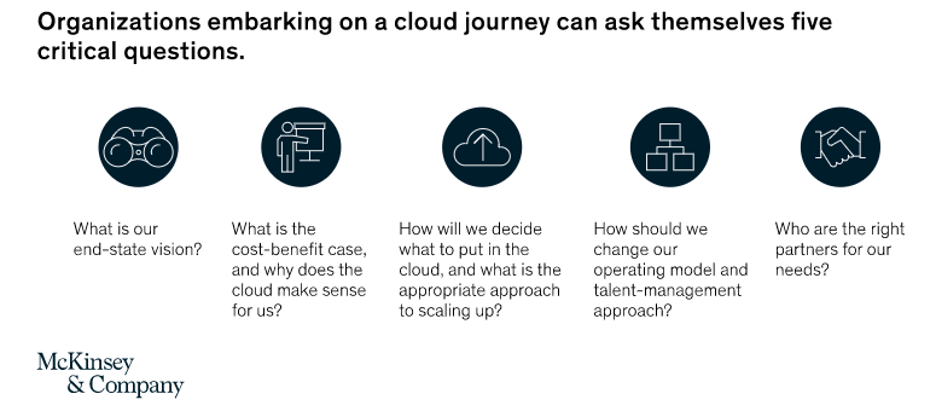How cloud helps deliver the holy grail for Citizen Services | Microland

The COVID 19 pandemic challenged the citizen services ecosystem more than ever. It amplified expectations on service levels and exposed chinks in the technology infrastructure that was designed to support it. It also revealed how technology is not just about improving the quality of life but also at a fundamental level, “enhancing and saving” lives.
Databases that were erstwhile local needed to be accessed remotely, services that were until now logged and managed needed to be automated, and emergency response capacities that were modest were expected to respond to unprecedented spurts in service requests. The citizen services that were the most challenged were also the services that we're most keen to transform. Cloud transformation was the silver bullet suggested in more ways than one.
This POV emanates from our experience and perspectives in delivering services to the sector that amongst many had to drive much harder towards Cloud adoption. Across Public Health, Citizen Experience, Emergency Response, Employment Services, Payment services, and Education, Cloud transformation as part of a balanced strategy has augured well.
Throughout the last decade, the Public Sector has striven to achieve positive change for Citizen outcomes. Strategy documents have been riddled with custom phrases like “Citizen In”, “Revitalising our Places”, “Breaking down silos”, “Customer Experience’’, and the latest jargon; the likes of “Digital Transformation” and “Digital Agility”.
The pandemic has shown what can be achieved when we “have to”. The change has been dramatic and completely people focused, supporting new ways of working and challenging the norm. Bending budgets and systems to support overnight challenges aren’t new to the space and we are all now gazing at the impact of what the long-term impact of the transformation on our “Places” will be. We have proven over the last period of dramatic change, support and demand for Digital service delivery that positive agility is here to stay!
One of the key hyped technologies to support this is Cloud. Questions abound: “Is it Safe?”, “Will it impact budgets?”, “Am I creating another IT Silo”, “How does it help with Security?”, “Can legacy applications easily move?”, “Is there a downtime disruption that will it hit me?“, “How resilient and future proof will this transformation be?” and more…
A recent Mckinsey insights note captures the progression on how public sector tech leaders can speed up the journey to the cloud, represented in the image here.
The digital acceleration we have witnessed can be cemented and accelerated for positive outcomes for the citizens we support. Public sector organizations that seek to improve citizen services and have embarked on a digital transformation journey are increasingly moving to the Cloud. They are able to do so while remaining within strict budget constraints and there is evidence that they are reaping the rewards of the decision. These organisations are ably supported by a different set of partners from the traditional. These partners are disrupting delivery norms with exceptional service through partner agnosticism—the right approach and technology for the right “citizen outcome”.
We see 5 clear benefits that Cloud transformation will enable for the sector:
- Democratisation of siloed, hard to access data: Traditionally, many organizations have stored data locally creating data siloes that adversely impacts productivity. Hosting data on cloud environments unlocks these silos, making it easier to deliver a consistent service to citizens in a centralized format.
- Focusing on “real” transformation: Managing your own infrastructure can take up a lot of time and resources, distracting us from the more essential digital transformation initiatives. Hosting services in the cloud will eliminate the onerous day-to-day management burden and allow agility and the freedom to change on demand.
- Improving service deployment: Through the levels of data collection and analysis that are enabled by hosting data in the cloud, public sector organizations can make evidenced process decisions that allow them to provide the most appropriate services to the neediest citizens quickly.
- Leveraging the Internet of Things: We’ve all seen the amazing possibilities of how the pandemic used IoT to its advantage. Remote monitoring and support providing essential care is now an essential part of citizen service delivery, and the Cloud makes IOT leverage more possible than ever.
- Enhancing accessibility: Cloud technology presents the opportunity to develop more secure citizen-accessible systems that improve services and extend their reach securely to allow both staff and citizens to access data from anywhere. Today’s citizens can sometimes be frustrated by the fragmented services they receive when transferring between public sector organizations. Cloud technology can help reduce that frustration by allowing key systems and organizations to integrate and giving citizens a ubiquitous end-to-end experience – “Place-based service delivery” will become the order of the day.
According to a 2012 McKinsey report titled “How government can get ahead in the cloud”, the author calls for investments in tools, capabilities, and processes, that can help surmount obstacles to cloud migration. The report further emphasizes that such investments are likely to yield significant returns in the long term. We are way past 2012 and it’s important to agree that the “long-term” is here.
Cloud adoption for Local Authorities is about taking realistic steps and keeping it outcome-focused. Partners with experience can help build the evolution over years, balancing budget, outcomes, and risk—doing it right and keeping all service providers and Citizens on board, thus opening up a platform for agility and proactiveness the safe way. Microland can help!


















